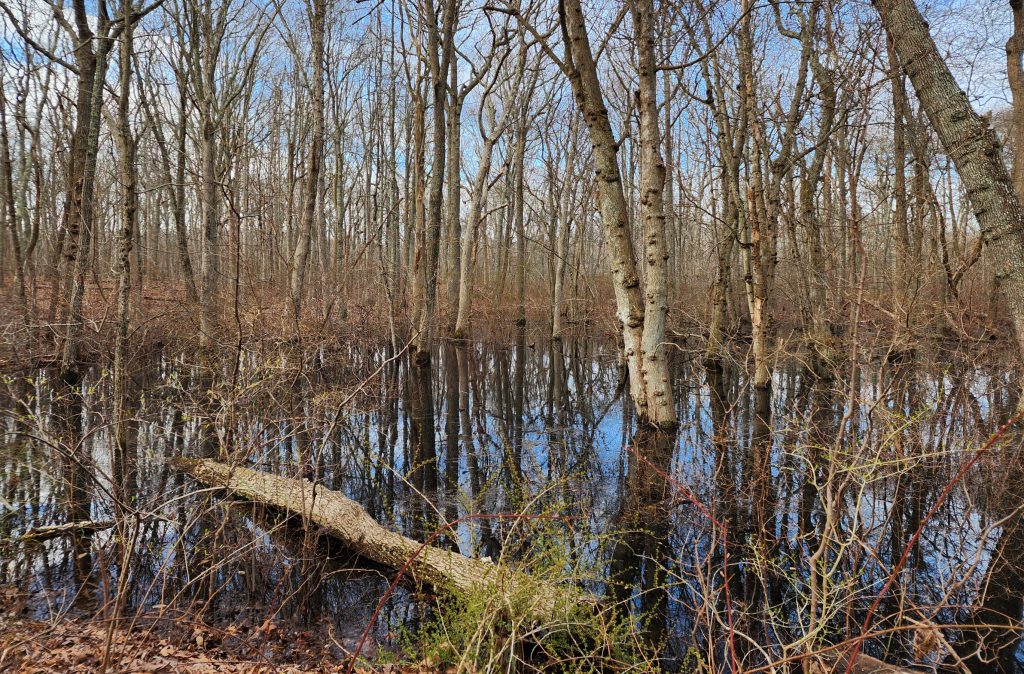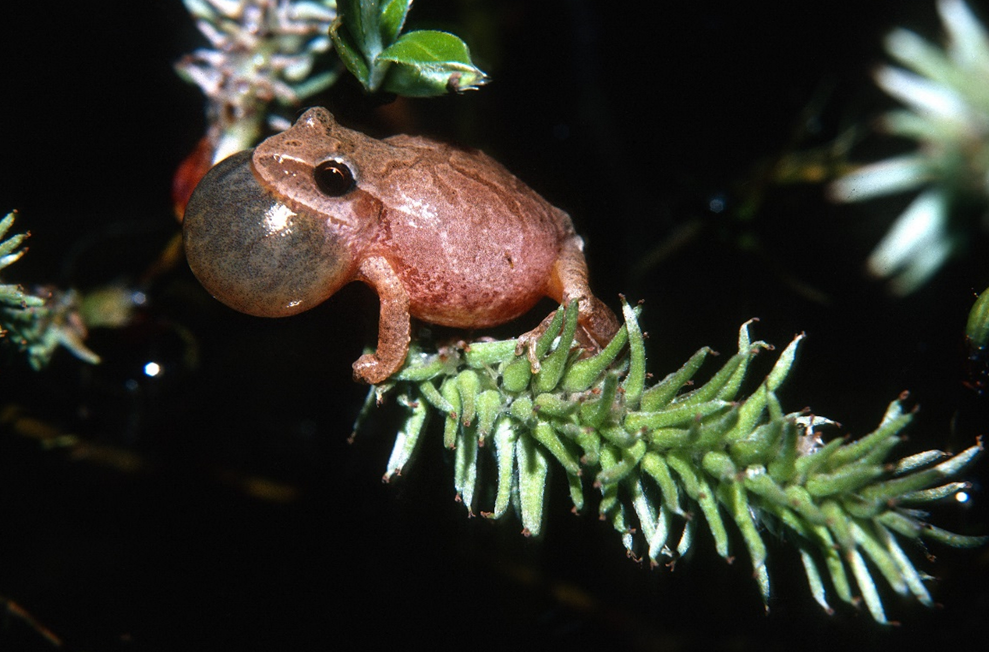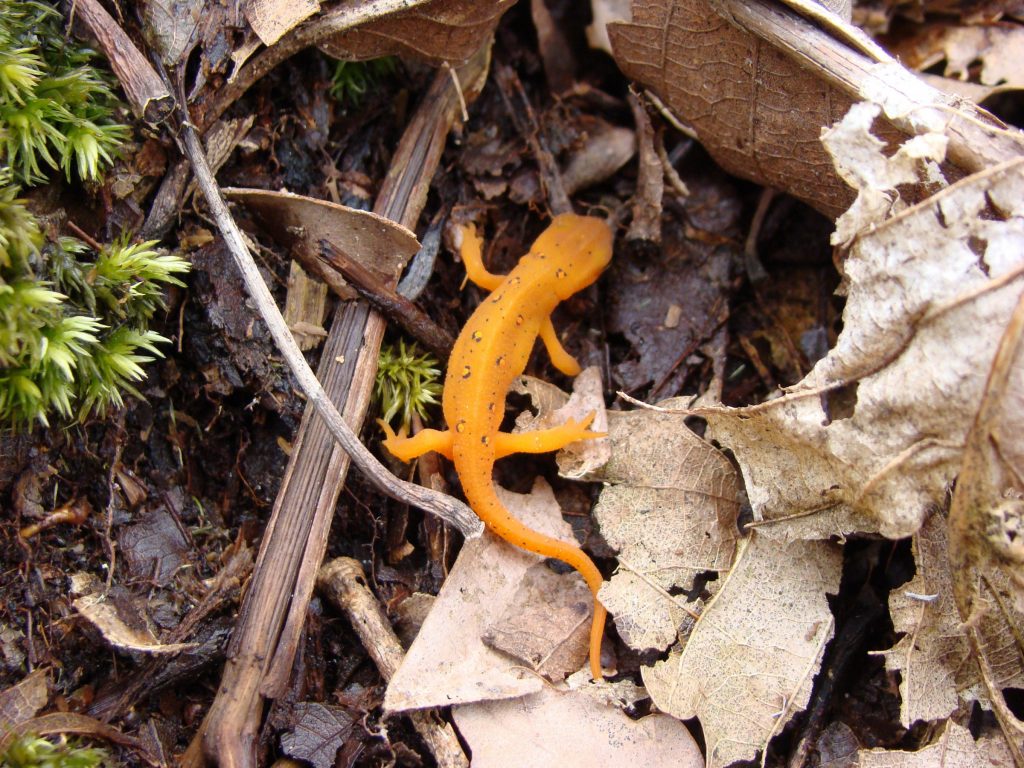
Amphibians are the metamorphic marvels of the liminal spaces between land and water. Most frogs, toads, salamanders, and newts begin their lives as tadpoles with gills, gradually morphing into four-legged adults equipped with lungs. Some skip the lung-creating step and breathe through their permeable skin. These unusual adaptive feats allow amphibians to survive the demands of both terrestrial and aquatic realms.
Adapting to the slow and steady rhythms of the natural world, however, is different than adapting to the often dramatic and fast-paced changes in the human-built environment. Unfortunately, the wetland habitats many amphibians rely on for complete life cycles are often the target for dredging, draining, and filling in development projects.
Wetlands are the habitats where land and water mix and merge, fluctuating with the rain and tides. They can be coastal and brackish, or inland and fresh. A distinctive type of freshwater wetland, vernal pools, are as unique as their amphibian inhabitants, dotting forest floors with an ephemeral existence, appearing and disappearing at the whims of precipitation and fluctuating ground water levels.

Amphibian reproduction is synced with these transient ponds; their arrival early each year (vernal means “spring”) creates an ideal nursery for tadpoles. The mole salamanders (including the Eastern tiger salamander) begin reproduction when rain melts the ice over vernal pools. They emerge from their subterranean tunnels, cross the snow and ice, and slip down into the pools to begin breeding.
Recently, amphibians and their habitats received special attention in the arena of New York’s environmental policy. Over one million more acres of freshwater wetlands and vernal pools will receive protections under new draft regulations released this month by Governor Hochul and the NYS Department of Conservation. These steps to bolster state protections for NYS freshwater wetlands come at a critical time, after Supreme Court rulings weakened federal wetland regulations last year.
“The draft regulations would extend protection to the adjacent areas of vernal pools, which are critical breeding habitats for amphibians,” said Louise Harrison, our Long Island Natural Areas Manager. “The frog and salamander species that breed in vernal pools are dependent not only on the pools but also on the naturally vegetated upland areas around them, where the adults live when not breeding.”

This ecological axiom—the importance of connectivity between habitats for species to thrive—holds true also in the case of the 1,000-acre forest in Old Saybrook, Essex, and Westbrook, CT known as The Preserve. In 2015, we celebrated the end of a successful 10-year, long-shot fight to save the last great coastal forest in southern New England from being turned into a golf course and luxury housing development.
The Preserve serves as a wildlife habitat, a carbon sink, and a ground and surface water purification system that protects Long Island Sound. It includes 38 vernal pools, the “largest and most productive assemblage of these fragile resources anywhere in Connecticut” according to ecologist Michael Klemens. Now, the Forestry Division of the CT Department of Energy and Environmental Protection (DEEP) is preparing to conduct sustainable forest management at The Preserve, including timber harvesting.
The Preserve’s endangered or dwindling species of frogs and salamanders require a sufficient connection between the breeding pools and upland vegetation. Abrupt or long-lasting changes to amphibian habitats can harm the intricate relationship between amphibians and their environment. Pollutants from runoff in construction sites, for example, can smother or poison delicate amphibian eggs in vernal pools.
The state released its draft Forest Management Plan, and we are working to let DEEP know we care about the sustainable management of this priceless forest and its wetlands, with emphasis on closely monitoring forestry operations to ensure stringent practices for protecting vernal pools and critical habitats are followed. For example, in the plan, the so-called “core protected area” of the forest is actually fragmented by areas where timber harvesting will occur. We’ve urged DEEP to connect these protected areas in the center of the Preserve to form a true “core.”

Isolation of any kind makes amphibians more vulnerable, in the Preserve as well as on Long Island. In the words of Louise Harrison, “If we don’t protect the habitats needed by amphibians for their entire life cycles, the day could come when they’ll be gone from Long Island. Should that tragic day arrive, they won’t be able to repopulate our coastal island on their own, as they cannot survive salt water.”
Amphibians’ sensitivity to habitat conditions, with their specific reproductive needs and permeable skin, make them ecological indicators that alert us to the health status of habitats. Consideration for amphibians in our human activities helps their populations persist in slinking, hiding, hopping, and crawling around wetlands and forests, bridging the worlds on water and land, while alerting us to the subtle, important changes in our shared environments.
As our planet becomes more unpredictable with a changing climate, amphibians teach us the importance of cooperating with natural world. Rather than prioritizing the stagnant structures of sidewalks, pavement, buildings, and sea walls, we can protect more vernal pools and incorporate wetlands, benefiting from their roles in flood prevention, stormwater management, and water purification. Perhaps working more with the natural patterns of the environment, we will adapt in amphibious ways, more in sync with our dependence on nature.
Written by Betsy Painter, Communications Manager and Science Writer at Save the Sound.
